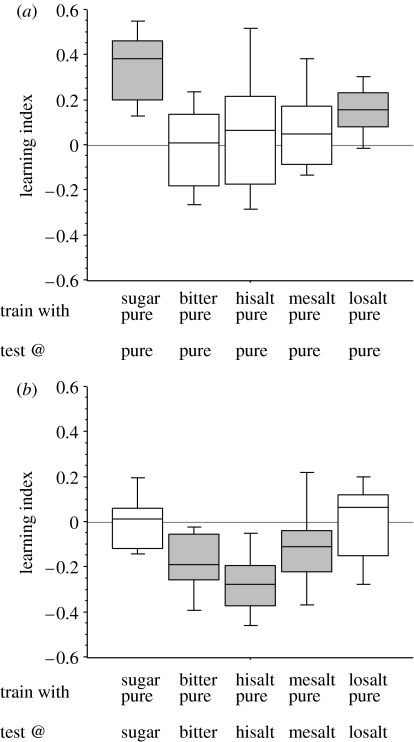Figure 1.
Memory expression in the absence or presence of the training-reinforcer. (a) In the absence of the training-reinforcer, appetitive memories are expressed, but aversive memories are not expressed. (b) In contrast, in the presence of the training-reinforcer, appetitive memories are not expressed, but aversive memories are expressed. Positive LI scores indicate appetitive memory, whereas negative LI scores indicate aversive memory. The box plots represent the median LI as the bold line, 25% and 75% quantiles as the box boundaries, and 10% and 90% quantiles as whiskers. In both (a) and (b), learning indices differ between groups (Kruskal–Wallis test; (a) p<0.05, H=26.4, d.f.=4, N from left to right: 19, 16, 12, 16, 13; (b) p<0.05, H=20.9, d.f.=4, N from left to right: 11, 16, 12, 18, 13). Significant differences from zero (p<0.05, one-sample sign tests) are indicated by the shading of the boxes. U-tests for ‘vertical’ comparisons between the columns in (a) versus (b) are from left to right: U=9, N=19, 11; U=62, N=16, 16; U=24, N=12, 12; U=71, N=16, 18; U=43, N=13, 13; p<0.05 in all cases. Hisalt, high salt; mesalt, medium salt; losalt, low salt.

